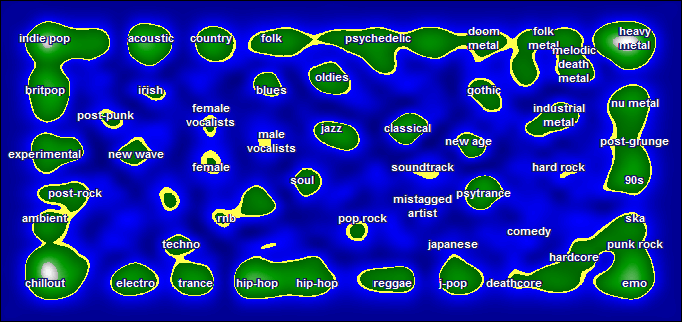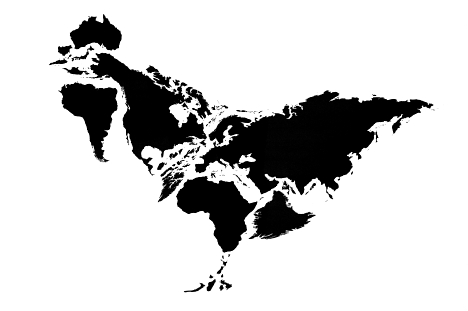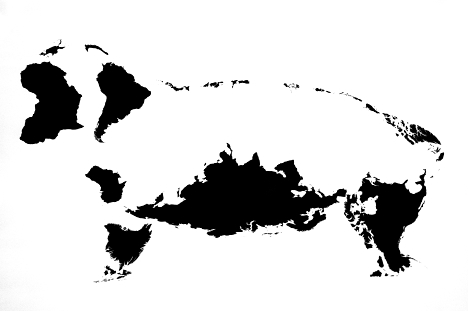Two interesting uses of maps today, one is a completely non-geographical map that illustrtaes data while the other is a completely artistic use of geography.
Islands of Music
Last.fm is a great service – I’ve written about it before. The best thing about it is the copious and collection of interesting data on music tastes (you can even see how geeky your taste in music is).
Like many other web sites Last.fm has a tagging system, and so it interesting to see how different tags relate to each other – are hip-hop fans more likely to listen to ambient or heavy metal? One very cool way to do this is with a map.

See the orginal version here, complete with mouseover descriptions of the different islands. Visualizing music tatses as a map makes some interesting findings pop out – the long continent of folk, psychadelic, and metal in the northeast, for example. Deathcore and emo are on the same continent, just on opposite sides of what I call You-Don’t-Understand-Me-Dad Bay.
This is an alternative to more conventional tag cloud or word cloud representations, though I’m not sure which presents information more clearly.
Another thing that strikes me is the similarity to video game maps – perhaps because of the iconic color palate. Though we might think of them geographically, video game maps are equally artificial ways to relate to a big pile of numerical data.
World maps as Chinese zodiac
Artist Kentaro Nagai has used the continents (and major islands) as a medium to create the twelve signs of the Chinese zodiac. See all of them here.
I particularly like the economy of arrangement in the rooster:

…and the sheep for it’s nice use of negative space.

Thanks to Chris for the link to the Zodiac